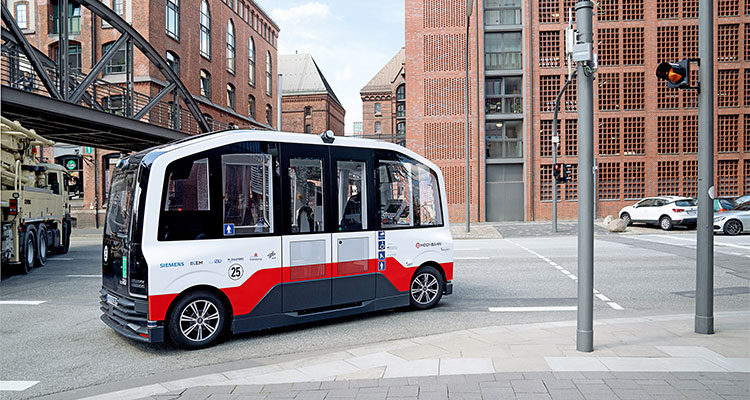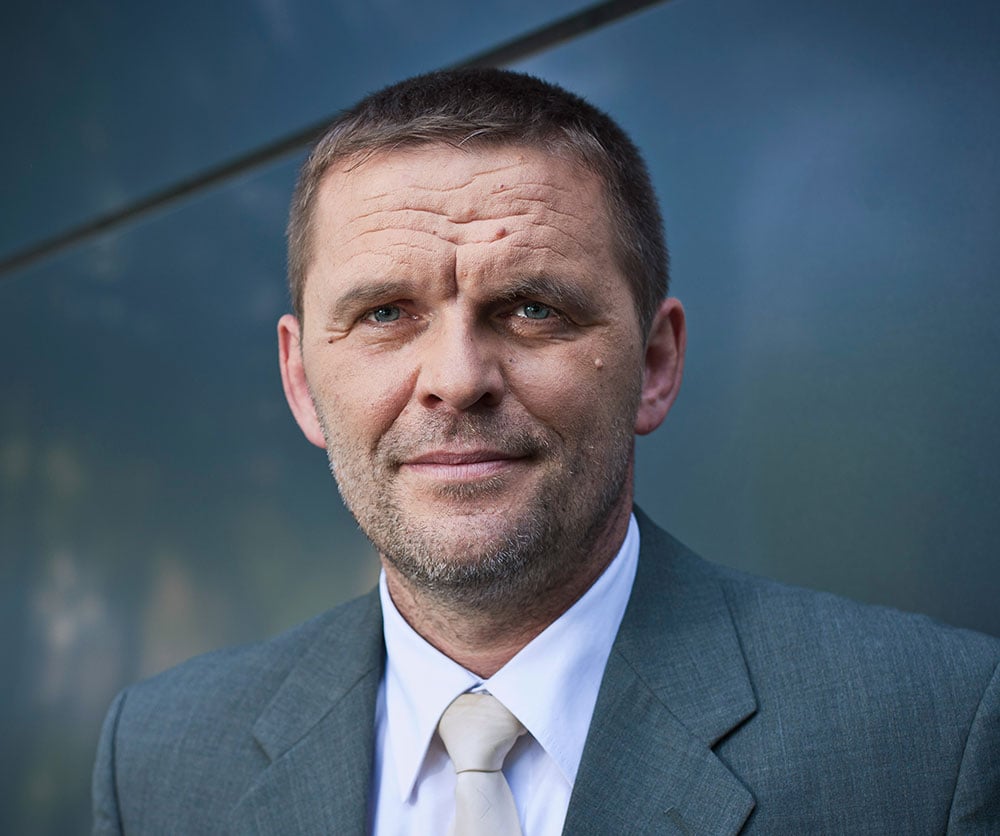Great advances encounter great challenges
What role do transportation and mobility play with regard to social and technological megatrends? In an interview with tec.news, Roland Edel, Chief Technology Officer of Siemens Mobility GmbH, took stock of his thoughts and visions for the future.
tec.news: What is your view of the significance of mobility and transportation as important future trends?
R. Edel: Growing urbanisation is an important future trend. More and more people are living in urban conurbations at the same time as global trade in good is increasing in non-stop fashion. Consequently, transportation systems will always be important in the future. Yes, there have been certain cutbacks due to the pandemic, but this will level off again as soon as we return to normality once Covid-19 is over. The pandemic has definitely had a significant impact on “business tourism”. Last year in particular made it clear that not every business trip or trade fair is necessary. Given this, I think we won’t see the increase in transport needs in this area that we previously witnessed.
tec.news: Where and how do you assess different regional needs?
R. Edel: Here, I like to talk about Maslow's hierarchy of needs in the transportation sector. To take some prominent examples, Berlin and Vienna are well-equipped in terms of local public transport, and as such they solve completely different problems, than a small town in South America does, for example. The situation in other metropolises, for example in China, is that they have yet to build up public transport at all. For me, the difference is not so much in the regions, but rather in the question of ‘where are individual urban centres or individual nation states at in terms of their public transport systems’. For example, the European Union, Japan, Canada and parts of the USA are well developed in this regard. For them, the question that arises is more along the lines of how can we optimise their systems even further? How do we make them more attractive to passengers? How do we get more traffic to switch from private to public transportation? The big difference here is in comparison to other regions that have yet to build their infrastructure – for example because their public transportation only offers bus systems and they urgently need a subway. But even in Germany there’s no homogeneous picture, you’ve got cities that are thinking about trams while in other places all the existing systems are already networked.
tec.news: Which technological megatrends do you view as emanating from which social megatrends? For companies, what does this mean specifically?
R. Edel: In addition to the trends of urbanisation and global trade I went into earlier, there is also climate change. These cited trends require sustainable mobility systems. In turn, in order to be able to create sustainable mobility systems, we need a shift in traffic from private transportation – where a relatively large number of resources are wasted per person or per tonne-kilometre – to public transportation. Basically, more options are needed in order for public transportation to be used in the first place. On the one hand, this can be achieved by upgrading things, via new construction or expansion. On the other hand, you can increase efficiency by digitising mobility. Numerous ongoing digitisation efforts are enabling us to build systems more efficiently and to push more traffic through pre-existing systems. Digitisation is the main lever with which we can increase the efficiency of existing infrastructures. It’s also important to increase the user-attractiveness of systems in line with the concept of “Mobility as a Service”, both as a freight user as well as in passenger transportation.
Another trend I see is the need for cities themselves to become smarter. Living environments must be created with intelligent water and power supplies as well as intelligent transportation. How can we build or convert cities in the future in a way that permits them to be controlled? Naturally, the area of cyber-security is an important factor here, because without it a smart city could be completely paralysed. So you’ve got to have the associated resilience, which is something that’s also important for rail, road and all digital technologies.
Still, in my opinion the subject of “service” in connection with digitisation technologies is also an important point, because the latter help ensure that as little maintenance as possible is required with as much infrastructure as possible. Sensor technology and/or artificial intelligence help to create intelligent maintenance systems that ultimately provide information on what needs to be done and when. Adjustments and updates then increase efficiency as time goes by. As soon as you digitise a service you end up with more services that are continuously evolving. For example, there are tens of thousands of point machines in Germany. Digitally retrofitting them enables us to display their current strength and/or the power needed to push the switch. If this becomes increasingly difficult over time, on-site maintenance ultimately becomes necessary, and we can precisely determine the point in time at which to perform this maintenance.
"In order to be able to create sustainable mobility systems, we need a shift in traffic from private transportation to public transportation."
ROLAND EDEL, CTO SIEMENS MOBILITY
tec.news: Looking back 10 years, what do you think are the greatest advances that have been made to date?
R. Edel: There’s no doubt that the topic of sustainability can definitely be cited as the greatest advance in the last 10 years. I mean, today the question is no longer whether we want to become sustainable, but rather how we want to achieve it? Back about 30 years ago environmental protection wasn’t relevant at all in our area. We took another big step when digitisation took off. Thanks to digitisation, we’ve already cemented digitised train control systems in place and we are achieving higher throughputs, shorter intervals between trains, efficient maintenance processes, etc. But the journey’s only begun. Of course, this is all a great step forward, but at the same time it’s a huge challenge.
tec.news: Looking towards the future, what will be particularly important over the next few years? Where do you see potential obstacles?
R. Edel: We need to continue to go down the path of automation with digital technology and make further progress in terms of autonomisation. This will be an exciting challenge especially in the area of private and public transportation. When he was asked when cars will become autonomous and really be driverless, the head developer of US technology company Waymo replied 'If the weather is nice and on good roads, we’re already there today, in 30 years it will be on every street and in every kind of weather’. I think it’ll be similar for the rail sector, even though we’re already on the right track. For example, there are already driverless subways, e.g. in Nuremberg. But the safety protocols used there can’t just be transferred willy-nilly to trams or regional and high-speed trains. In the future you’ll need environment sensors that make the vehicle so intelligent that they can replace the driver. In addition, a system like that will also need to be supported at critical points by the infrastructure, e.g. by lighting systems at an intersection or things like that. Today's train protection systems prevent collisions by using other tracks but still haven’t been designed to recognise people or animals on their route. It will probably be a few years before every train can be used completely autonomously, whatever the environmental conditions, and on any route.
Another important point is that we have to scale sustainability solutions much faster over the next few years. To do so they have to be inexpensive and reliable from an industrial perspective. From a national regulatory perspective, the question is how do we control this scaling? In turn, from the user's point of view, the key role is the issue of acceptance.
We also need to enhance the passenger experience in our public transportation options. The railroad has focused on being a means of mass transport since the 1950s. Over the decades, this has also resulted in passengers opting for private solutions, e.g. using a car.
Nowadays, public transport still means changing trains, or first arriving at some place from which your (continued) transportation takes place. This works door-to-door in private transportation (cars). Consequently, our goal is to be sustainably attractive for operators and passengers, e.g. via our Mobility as a Service - or "On Demand" solutions (DRT) in the future. These enable the passenger to plan and optimise his route in advance as well as integrate other means of transportation such as bicycles. “On demand” mobility solutions could in turn be self-driving minibuses, which are currently being used in the “Heat” project in Hamburg.
tec.news: In your opinion, what are the three most important tasks for the sustainable development of mobility and transportation in the next 3-5 years?
R. Edel: In the near future, the main task will be in three big areas: avoidance, shifting, and improvement. What do I mean by this? Transportation should be avoided where possible. Consequently, we need further optimisation of logistics such as avoiding empty runs, quickly switching goods between modes of transport, etc. If something can’t be avoided, it should be shifted to a mode of transport that makes the most sense in terms of a sustainability rationale, efficiency and energy concerns. If it can’t be shifted like this, the respective transportation mode must be improved by making it as efficient and sustainable as possible while achieving high throughput.
We have to increase the efficiency of the railways through digitisation, and increase capacities. With regard to e-mobility on roads where we use electric energy directly in the form of batteries and/or overhead lines, we need to achieve a massive improvement over the next few years. After all, by 2030 we want to ensure that combustion vehicles are no longer allowed to be registered unless they’re no longer powered by fossil fuels. This is going to be a major task that needs to be tackled today. We need solutions here, maybe based on hydrogen or e-fuel? Or maybe a smart combination of everything?



